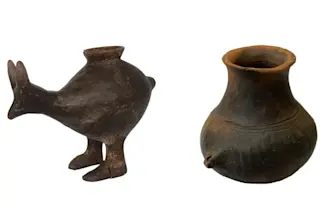Ancient pottery is helping scientists learn how prehistoric parents fed their infants.
A study of tiny clay pots with small spouts discovered at archaeological digs reveals that the vessels were likely used as milk bottles to feed babies. The specialized pots have long been found at sites around the world, and scientists have speculated that they may have been used to feed children or the sick. By looking at the lingering traces of ancient food inside these clay bottles, scientists have finally unlocked their secrets.
The bottles offer a glimpse into early parenting, says study author Julie Dunne. “I think it’s obvious that they loved their children in the same way that we do today,” says Dunne, a biomolecular archeological scientist at the University of Bristol in the United Kingdom.
Beginning during the Neolithic Period over 6,000 years ago, small teapot-like vessels began appearing in Europe. They came in many ...














